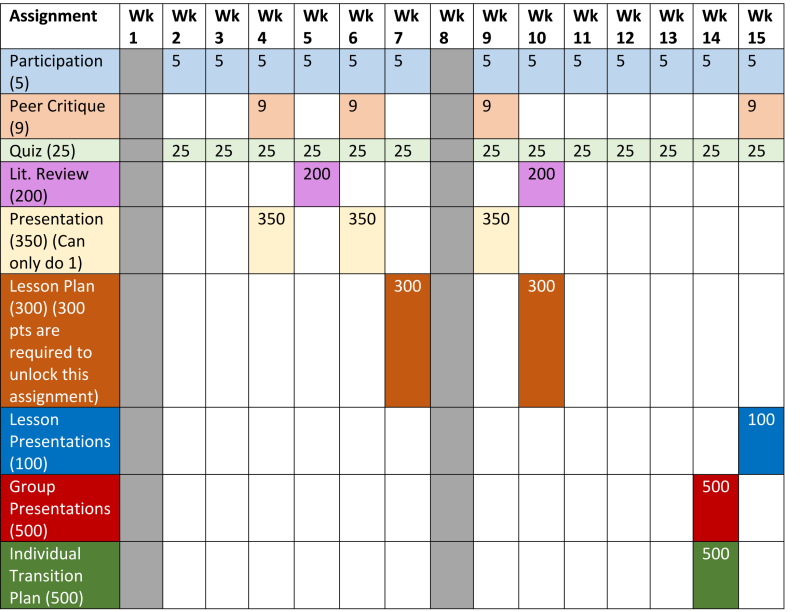Level Up Grading Scheme
A level up grading scheme allows students to earn points based on their efforts, rather than losing points due to an inability to maintain perfection, supporting students’ sense of growth and reducing fear of failure. Instead of starting with a grade of 100%, in a level up grading scheme students all begin with zero points and earn points by completing a variety of assignments. Points are relatively easy to earn in the beginning to encourage engagement by building students’ sense of competence and ability before becoming gradually more challenging as the course progresses. Students are also provided some autonomy with this type of system, as they are not required to complete all assignments, but instead can choose from a range of assignments based on the overall points needed to reach the grade level that they desire.
In order to maintain student autonomy by incorporating a variety of assignments, one essential element of this this grading method is to ensure that there are always more points available than the total number of points needed to receive the maximum grade level. As a general rule, the total points available in the course should be about 20-30% higher than the total points needed to earn the highest grade. For example, if students need to reach at least 500 points to earn an A in the course, the total points possible in the class should equal 600 to 650.
A level up grading scheme does involve some strategic planning and effort up front to ensure that enough points are assigned and that they are assigned in such a way that students cannot “game the system” by completing the fewest number of assignments or by avoiding the more challenging ones. When creating this type of grading structure, Brunvand and Hill provide a list of key questions that should be taken into consideration (Table 1) and they suggest employing a color-coded matrix (Table 2) to save time, increase accuracy, and space out due dates.[1]


In addition to the basic structure of the grading scheme (point values and varied assignments), additional features such as badges, locks and unlocks, or naming conventions that reflect the course content can also be incorporated to encourage student engagement. For more about these specific supplemental components and other strategies that relate to a level up grading system be sure to check out the resources below.
- Gameful Elements: Badges, Locks and Unlocks, Grade Levels that Match Content
- Contract Grading and Varied Assignments
- Mastery Paths
Citations
[1] Stein Brunvand and David Hill, "Gamifying Your Teaching: Guidelines for Integrating Gameful Learning in the Classroom." College Teaching 67, no. 1 (2019): 63-64.
